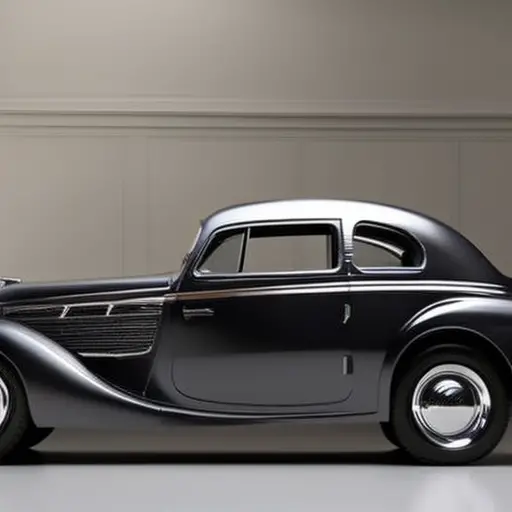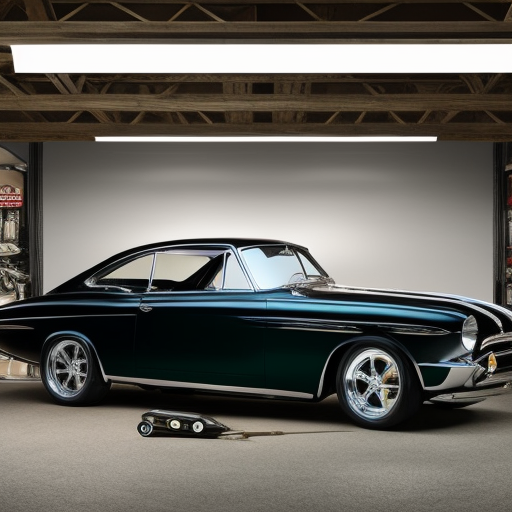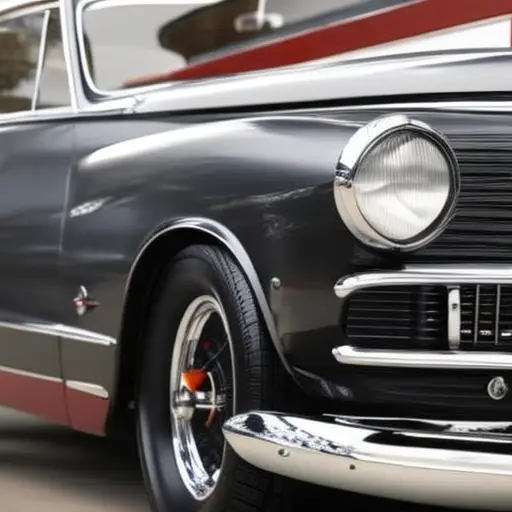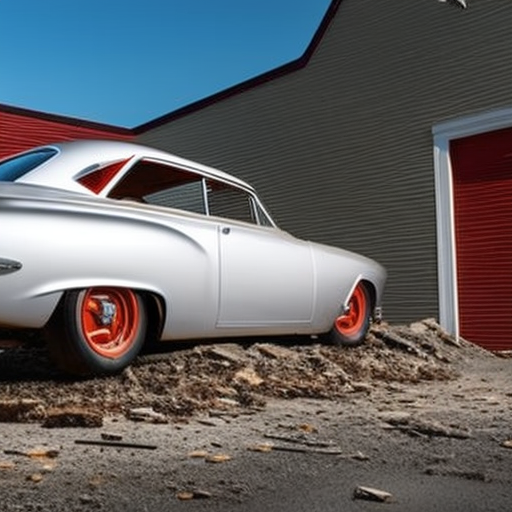Beginner’s Guide to Restoring Classic Cars

You may think restoring a classic car is a daunting task, but with the right guidance, it can be a rewarding and enriching experience.
In this beginner’s guide, we will provide you with a detailed roadmap for navigating the intricate world of classic car restoration.
From finding the perfect car to sourcing parts and mastering bodywork, this comprehensive guide will equip you with the knowledge and skills needed to embark on your restoration journey with confidence and passion.
Finding the Right Classic Car
When searching for the right classic car to restore, careful consideration of the vehicle’s condition, availability of parts, and market demand is essential. The classic car market is diverse, with a wide array of makes and models available for restoration. However, restoration challenges such as locating rare parts, addressing mechanical issues, and dealing with rust and corrosion can vary significantly based on the specific car chosen for restoration. Therefore, finding the right car is crucial to the success of the project.
One of the first steps in finding the right classic car is to research the market demand for different models. This can help in identifying cars that have a strong enthusiast following, making it easier to source parts and expertise. Additionally, finding reputable sellers is key to ensuring that the car’s condition is accurately represented, and to avoid scams that are unfortunately prevalent in the classic car market. Engaging with established classic car dealers, attending auctions, and leveraging online platforms with verified sellers can aid in finding the right car from a trustworthy source.
Setting Up Your Workspace
To prepare for restoring a classic car, it is essential to organize and equip your workspace with the necessary tools and resources.
Workspace organization is crucial for efficiency and safety. Start by decluttering the area and ensuring that there is ample space to maneuver around the vehicle.
Invest in sturdy workbenches and storage solutions to keep your tools and parts organized and easily accessible. Safety measures should also be a top priority. Install proper lighting to illuminate the workspace and invest in personal protective equipment such as gloves, goggles, and ear protection.
Additionally, ensure that the workspace is well-ventilated to prevent exposure to harmful fumes and dust. Fire extinguishers and first-aid kits should be readily available in case of emergencies.
It’s also important to have a clean and well-maintained environment to work in. Regularly sweep and tidy the workspace to prevent accidents and maintain a professional and productive atmosphere.
Assessing the Condition of the Car
After setting up your well-organized and safe workspace, the first step in restoring a classic car is to thoroughly assess its condition. This step is crucial as it provides a clear understanding of the work that lies ahead and helps in formulating an effective restoration plan.
When assessing the condition of the car, focus on the following key areas:
-
Inspecting Rust: Examine the car’s body, undercarriage, and frame for any signs of rust. Rust can significantly impact the structural integrity of the vehicle and should be addressed early in the restoration process to prevent further damage.
-
Understanding Frame Damage: Carefully assess the frame for any signs of damage or misalignment. Frame damage can compromise the safety and performance of the vehicle, making it essential to identify and address any issues before proceeding with the restoration.
-
Evaluating Mechanical Components: Thoroughly inspect the engine, transmission, suspension, and other mechanical components to determine their condition. Identifying any mechanical issues early on will guide the restoration process and ensure a comprehensive overhaul of the vehicle.
Planning Your Restoration Approach
Upon completing a thorough assessment of the classic car’s condition, the next crucial step is to meticulously plan the restoration approach, ensuring a systematic and efficient process.
Creating a budget is a fundamental aspect of this planning phase. Researching techniques and estimating costs for the necessary tools, parts, and labor will help in setting a realistic budget for the restoration project. It’s essential to consider potential unforeseen expenses, so building a contingency fund is wise.
Moreover, researching restoration techniques is paramount. Understanding the specific methods required for the car’s make and model will ensure that the restoration is done correctly, preserving the car’s authenticity and value. Additionally, identifying any potential challenges or areas that may require specialized expertise will inform decisions about when to seek professional assistance.
By carefully considering these factors, a comprehensive plan can be developed to guide the restoration process effectively.
With a well-thought-out plan in place, the next step is sourcing parts and materials to commence the restoration work.
Sourcing Parts and Materials
Following the thorough assessment and planning of the restoration approach, it is essential to identify and source the required parts and materials for the classic car restoration project. This involves a meticulous process to ensure that the authenticity and quality standards of the classic car are maintained.
Here are three key considerations when sourcing parts and materials:
-
Exploring Salvage Yards: Salvage yards can be a treasure trove for classic car enthusiasts. These yards often hold a variety of parts and materials that can be repurposed for the restoration project. Visiting salvage yards allows enthusiasts to inspect parts firsthand, ensuring they meet the required authenticity and quality standards.
-
Utilizing Online Suppliers: Online suppliers offer a convenient way to source both common and rare parts and materials. Enthusiasts can access a wide range of options and compare authenticity and quality standards before making a purchase. It is crucial to verify the reputation of online suppliers to ensure the authenticity and quality of the parts and materials.
-
Prioritizing Authenticity and Quality Standards: Whether sourcing from salvage yards or online suppliers, prioritizing authenticity and quality standards is paramount. Ensuring that the parts and materials align with the original specifications of the classic car is crucial for a successful restoration. Thorough research and scrutiny are essential to maintain the integrity of the vehicle.
Tackling Mechanical Restoration
As we move into the realm of mechanical restoration, it’s essential to grasp the fundamentals of overhauling the engine and restoring the brake system.
From reconditioning worn-out components to ensuring optimal performance and safety, a meticulous approach to engine overhaul and brake system restoration is crucial.
These aspects are integral to the overall functionality and driveability of a classic car, and mastering them will be a rewarding and enlightening experience.
Engine Overhaul Basics
The engine overhaul process is a fundamental aspect of mechanical restoration when restoring classic cars. It involves a meticulous approach to ensure the engine’s optimal performance and longevity. Here are three crucial aspects to consider:
-
Engine Tuning and Performance Upgrades: Fine-tuning the engine to its original specifications or upgrading it for enhanced performance requires expertise and precision. This includes adjusting ignition timing, carburetor settings, and optimizing fuel delivery for improved power and efficiency.
-
Rust Prevention and Metal Preservation: Addressing any corrosion or rust within the engine is essential for its longevity. Employing rust prevention techniques and preserving metal components through proper cleaning and protective coatings is vital to maintain the engine’s structural integrity.
-
Precision Machining and Reassembly: Utilizing precision machining to restore engine components to factory specifications and ensuring meticulous reassembly is crucial for optimal performance and longevity.
Mastering these engine overhaul basics is essential for a successful mechanical restoration of classic cars.
Brake System Restoration
Restoring the brake system of a classic car is a critical aspect of mechanical restoration, requiring careful inspection and precision in replacing worn components.
Brake fluid replacement and bleeding techniques are essential to ensure optimal brake performance.
When tackling brake system restoration, consider upgrading to disc brakes for improved stopping power and reliability. Additionally, converting from drum brakes to disc brakes can significantly enhance the car’s overall safety and performance.
It’s crucial to meticulously follow manufacturer guidelines and use high-quality components to guarantee the effectiveness of the restoration.
Whether it’s refurbishing the existing system or upgrading to modern brake technology, attention to detail and a passion for precision are key to successfully restoring the brake system of a classic car.
Mastering Bodywork and Paint
Mastering bodywork and paint is an essential aspect of classic car restoration. It requires meticulous attention to detail and a deep understanding of surface preparation techniques.
Choosing the right paint and primer is crucial in achieving a flawless finish that will stand the test of time.
From addressing imperfections to applying the final coat, each step in the bodywork and paint process plays a pivotal role in bringing a classic car back to its former glory.
Surface Preparation Techniques
Surface preparation techniques are essential for achieving professional results in classic car restoration projects. To ensure a flawless finish, consider the following techniques:
-
Rust removal and sandblasting: Prior to any paint application, it’s crucial to eliminate rust and corrosion. Sandblasting, a highly effective method, uses compressed air to propel fine abrasive materials to remove rust and old paint.
-
Filling and sanding techniques: After addressing any rust issues, fill in any dents, scratches, or imperfections with high-quality body fillers. Following this, meticulous sanding is essential to create a smooth and even surface for painting.
-
Priming for paint adhesion: Applying a high-quality primer not only provides a smooth base for the paint but also enhances adhesion, ensuring the longevity of the paint job.
Mastering these surface preparation techniques is fundamental to achieving a stunning and durable finish on your classic car restoration.
Choosing Paint and Primer
After meticulously preparing the surface, have you considered the most suitable paint and primer for achieving a flawless finish in your classic car restoration project?
When choosing paint and primer, color selection is crucial. Ensure the color matches the original shade to maintain the car’s authenticity. Additionally, prioritize paint and primer that offer advanced rust prevention to protect the vehicle for years to come.
The primer plays a vital role in creating a smooth and even surface for the paint to adhere to, enhancing the final finish. When selecting paint and primer, consult with professionals or refer to manufacturer guidelines to determine the best products for your specific classic car.
Now that you have the perfect paint and primer in mind, let’s move on to achieving flawless finishes with precision techniques.
Achieving Flawless Finishes
Achieving flawless finishes in classic car restoration requires mastering precise bodywork and paint application techniques.
-
Understanding Paint Application Techniques:
Perfect paint application is crucial for achieving flawless finishes. Knowledge of various methods such as spraying, brushing, and rolling is essential. Understanding the appropriate technique for different types of paint is also important. -
Implementing Color Matching Strategies:
To achieve a seamless finish, experts use advanced color matching techniques. This involves blending and matching colors to ensure that the new paint seamlessly integrates with the existing finish. Proper color matching helps to maintain the authenticity of classic cars. -
Attention to Detail in Bodywork:
Achieving flawless finishes also demands meticulous attention to bodywork. This involves repairing dents, smoothing out imperfections, and ensuring the surface is perfectly prepared for paint application. Mastering these techniques is essential for restoring classic cars to their former glory.
Final Assembly and Testing
Completing final assembly and testing is a crucial stage in the restoration process of classic cars. This phase involves meticulous attention to detail and rigorous testing to ensure that the vehicle not only looks impeccable but also performs flawlessly.
Final Assembly and Testing
In the final detailing stage, every component is meticulously inspected and installed to ensure precision and authenticity. From the placement of emblems to the correct fitting of trim pieces, every detail is attended to with the utmost care. This stage is where the classic car begins to truly come to life, as each part is carefully brought together to recreate its original magnificence.
The performance testing phase is equally critical, where the engine, transmission, brakes, and other vital systems are rigorously tested. This ensures that the vehicle not only looks the part but also operates at the peak of its capabilities. The table below provides an overview of the meticulous process involved in final assembly and testing:
| Final Detailing | Performance Testing |
|---|---|
| Precise placement of components | Engine performance testing |
| Authentic installation of trim pieces | Transmission functionality check |
| Emphasis on originality and accuracy | Brake system testing |
The final assembly and testing stage demands unwavering dedication and expertise to ensure that the restored classic car meets the highest standards of excellence.
Frequently Asked Questions
How Do I Know if I Have the Necessary Skills to Restore a Classic Car?
Assessing your skills for classic car restoration involves evaluating your mechanical aptitude, attention to detail, and problem-solving abilities. Necessary experience can be gained through courses, apprenticeships, or by working under an experienced mentor.
What Are Some Common Mistakes to Avoid When Restoring a Classic Car?
When restoring a classic car, common pitfalls to avoid include underestimating the project scope, neglecting proper research, skipping inspections, and overlooking safety concerns. Restoration challenges can be mitigated with thorough planning and attention to detail.
How Do I Determine the Value of a Restored Classic Car?
Determining the worth of a restored classic car requires thorough research into current market trends, historical value, and the overall condition of the vehicle. A comprehensive appraisal by a qualified professional can provide invaluable insights for accurate valuation.
What Are Some Tips for Maintaining a Restored Classic Car?
Maintaining a restored classic car requires meticulous care to uphold its preservation. Regular upkeep, including monitoring fluid levels, addressing any signs of wear, and adhering to a maintenance schedule, is crucial in safeguarding the restoration investment.
How Can I Get Involved in the Classic Car Restoration Community?
Immersing yourself in the classic car restoration community is a rewarding experience. Engage in local community events and restoration workshops to connect with like-minded enthusiasts, share knowledge, and build relationships that will fuel your passion for classic cars.
Conclusion
In the world of classic car restoration, every step is a labor of love. From finding the perfect car to sourcing parts and materials, the process requires patience, dedication, and a keen eye for detail.
As you work in your carefully set up workspace, every mechanical and bodywork challenge is an opportunity to bring a piece of automotive history back to life.
With each step, you are not just restoring a car, but preserving a piece of the past for future generations to appreciate.





